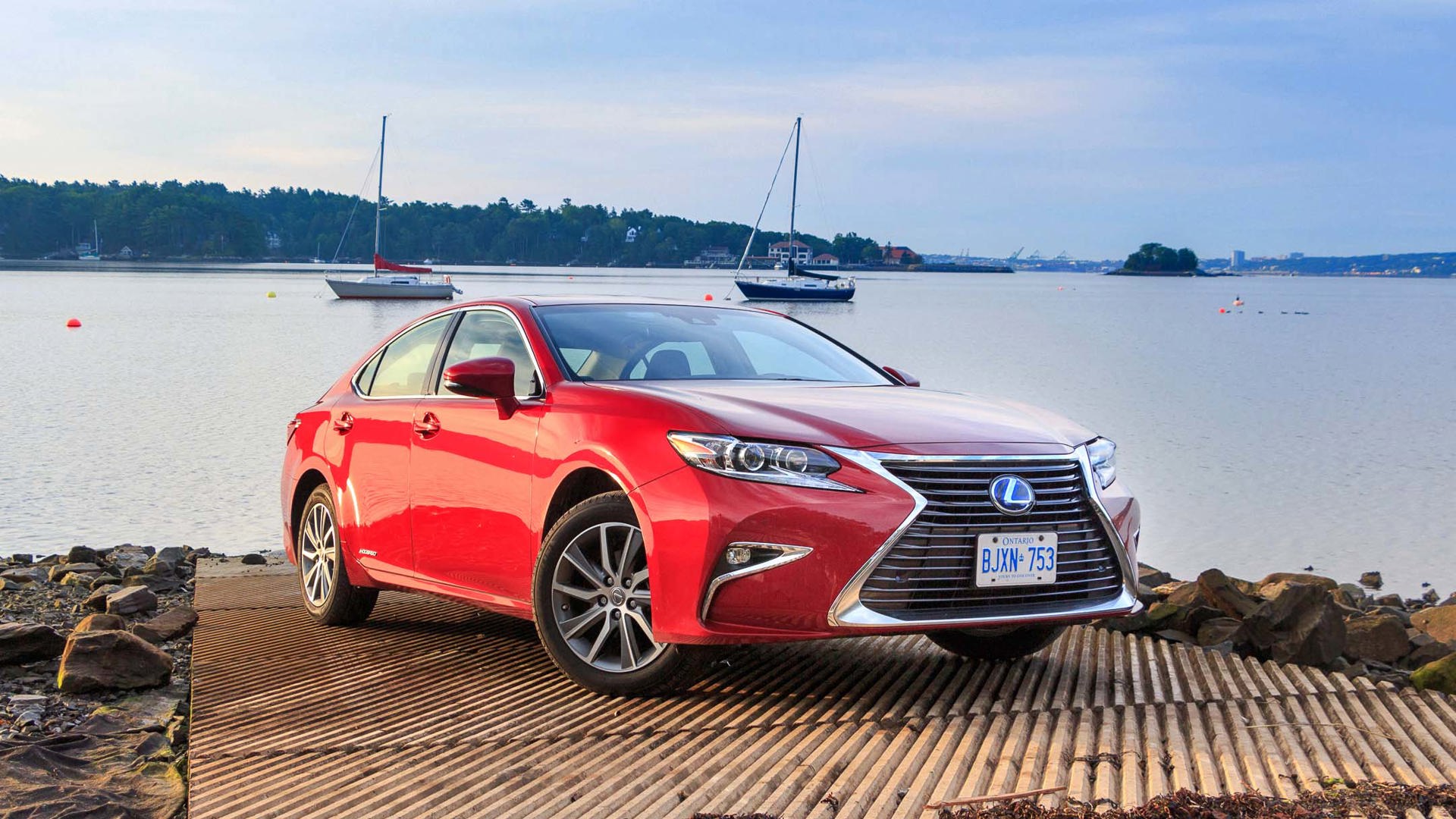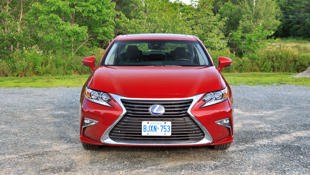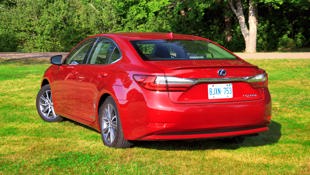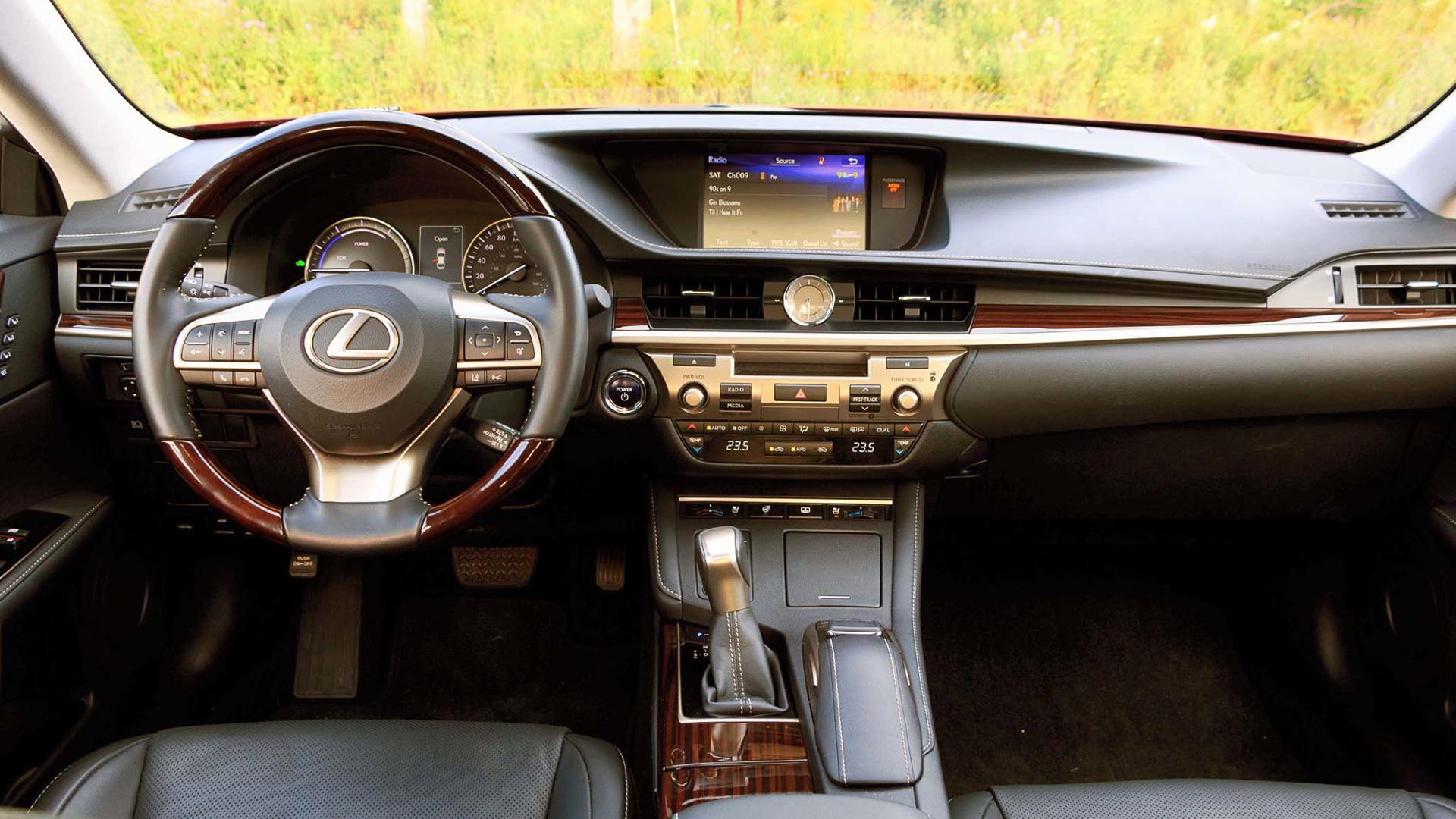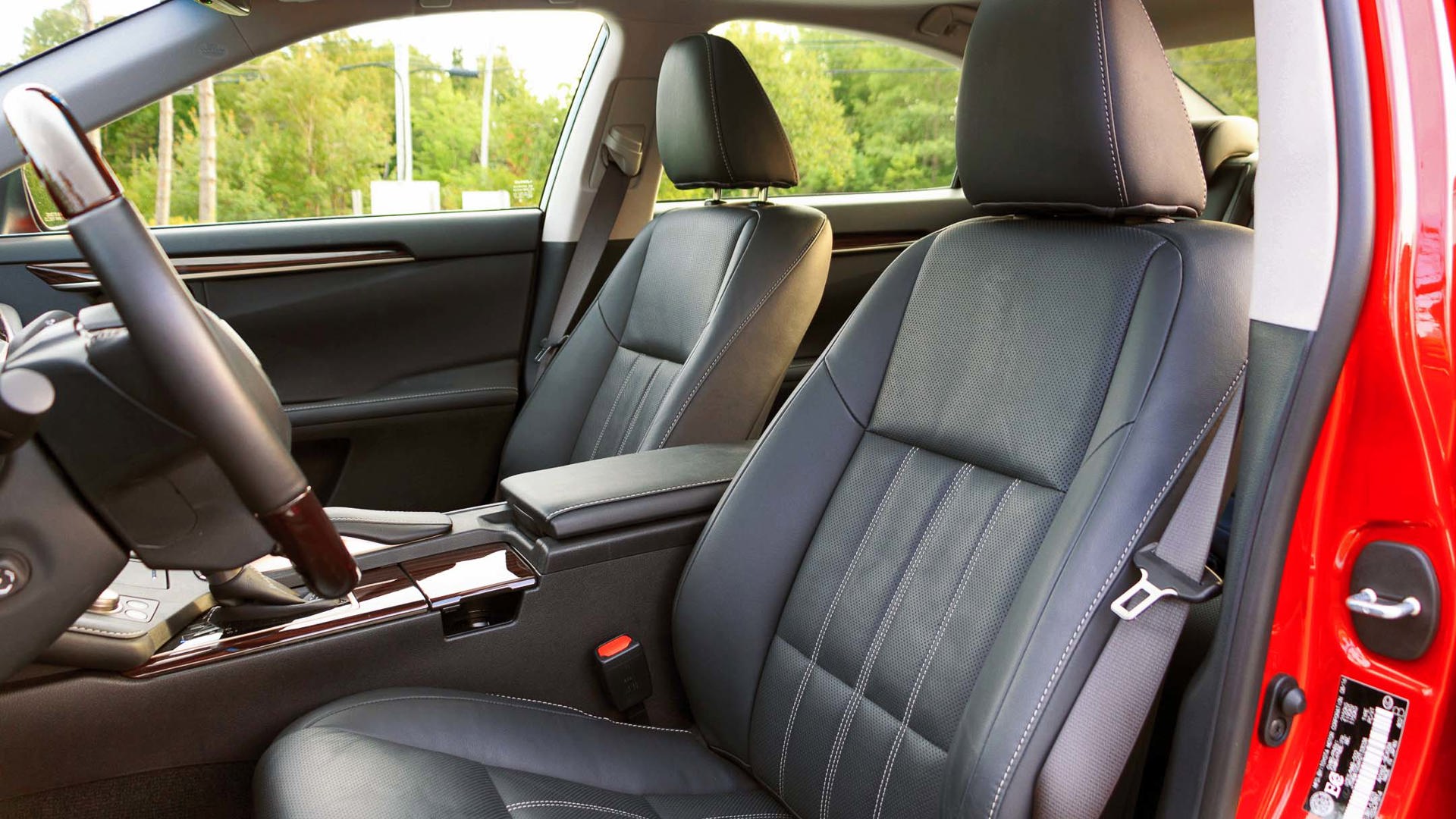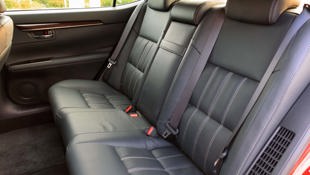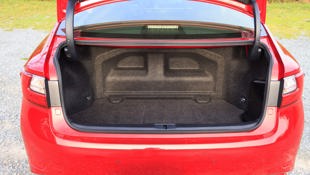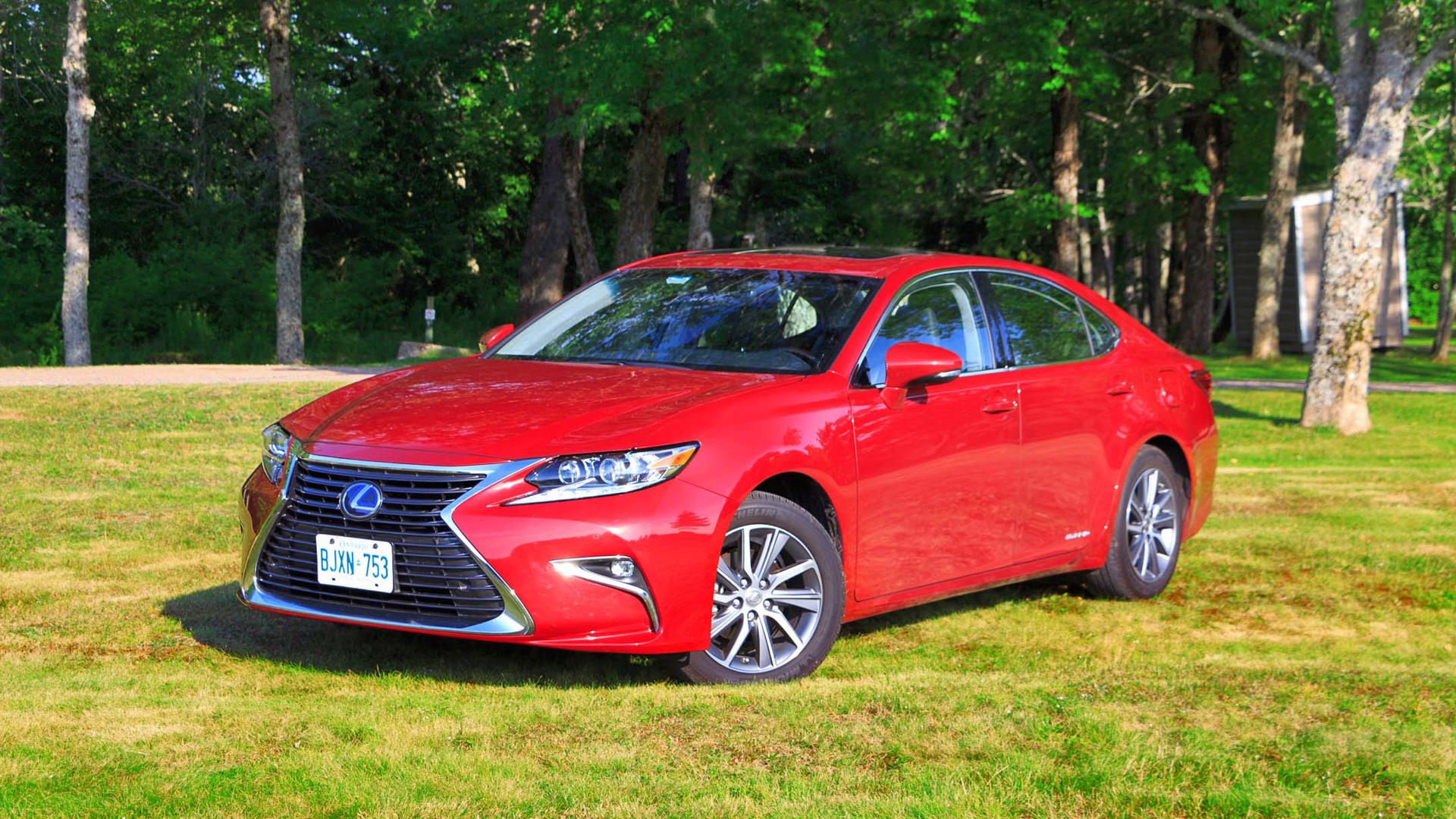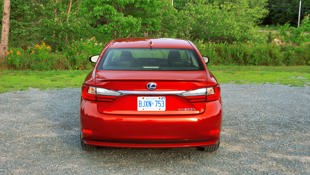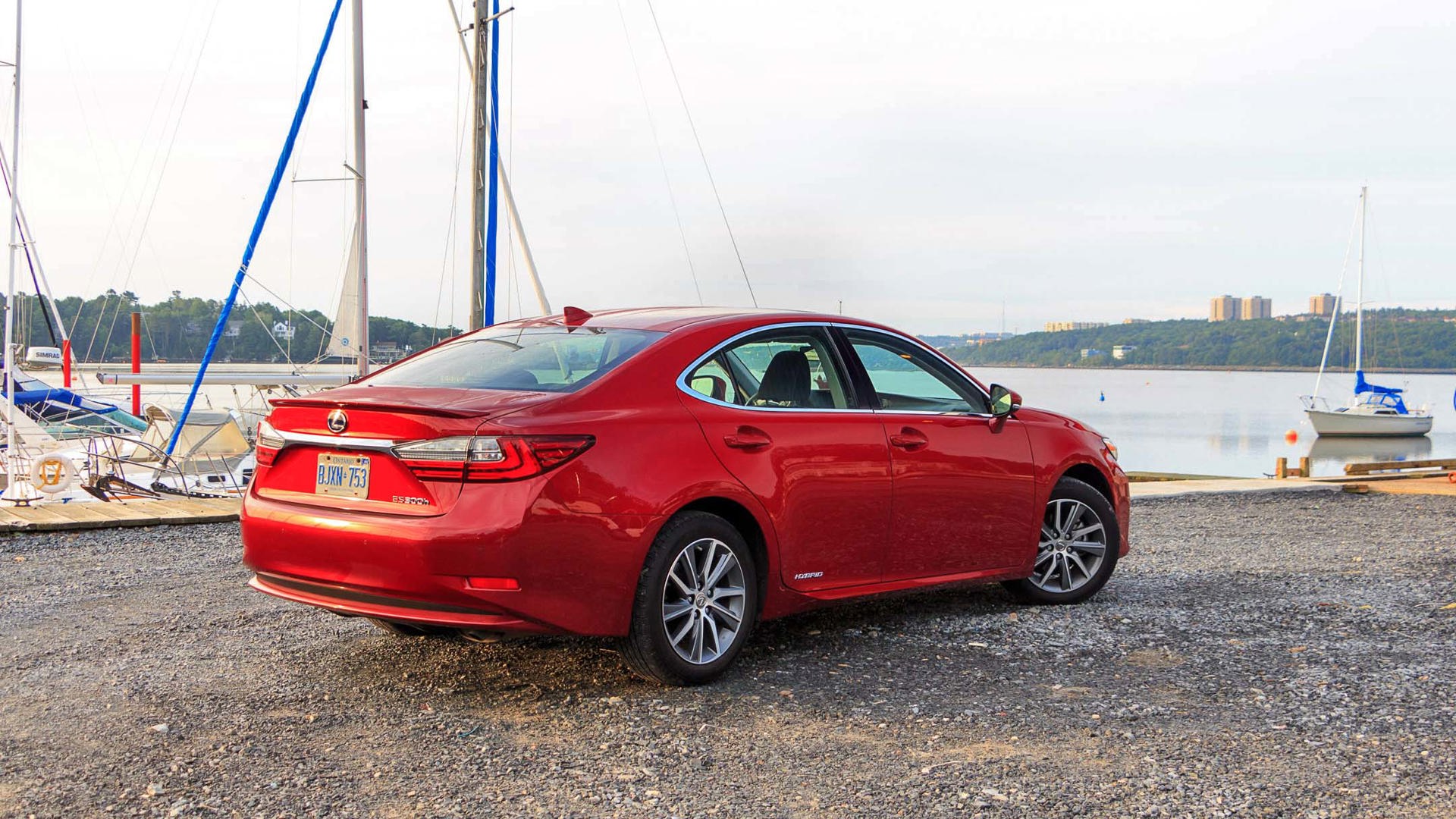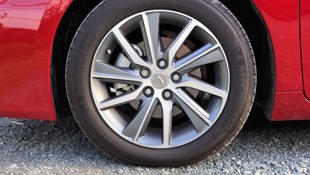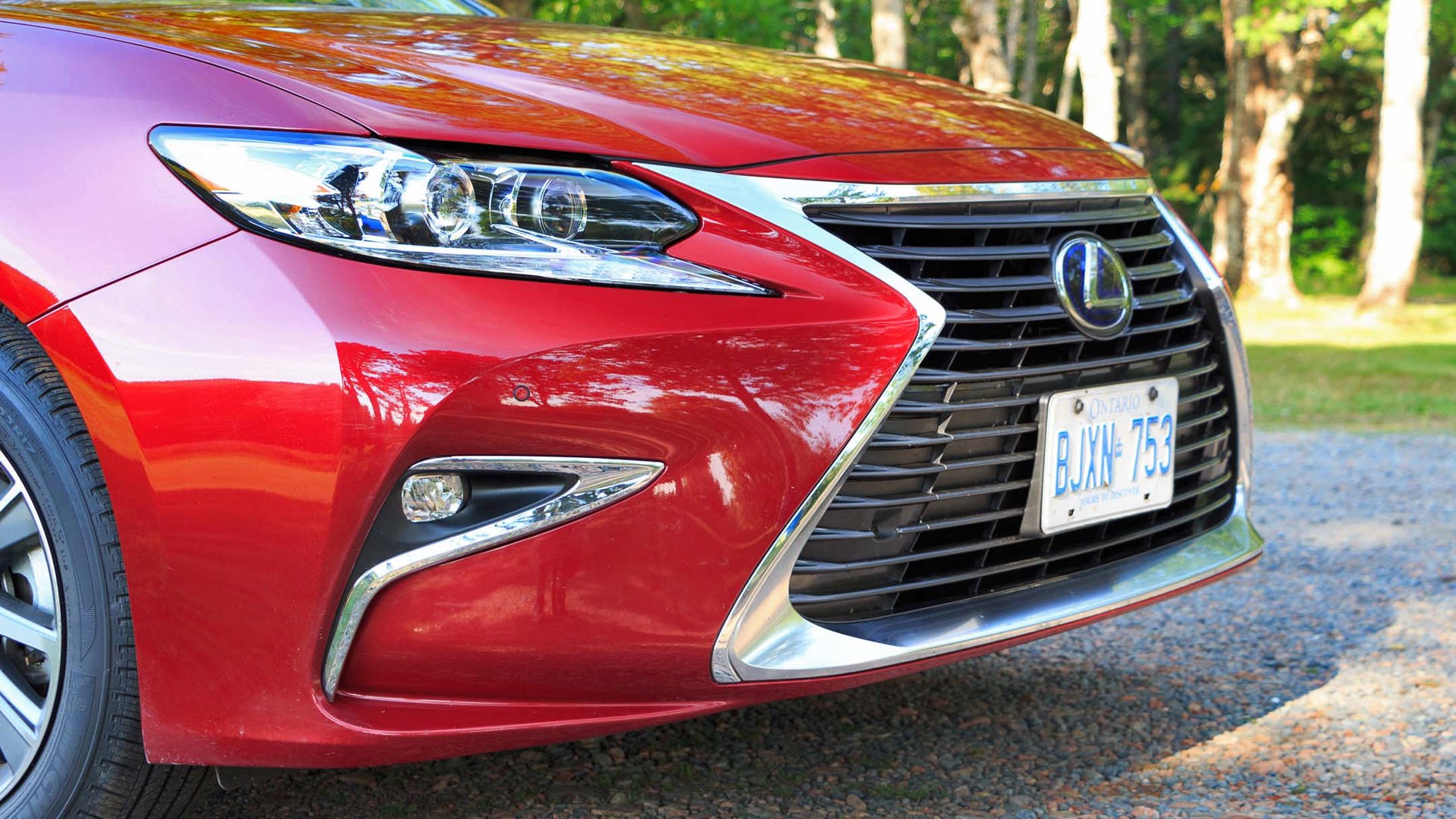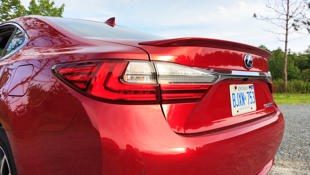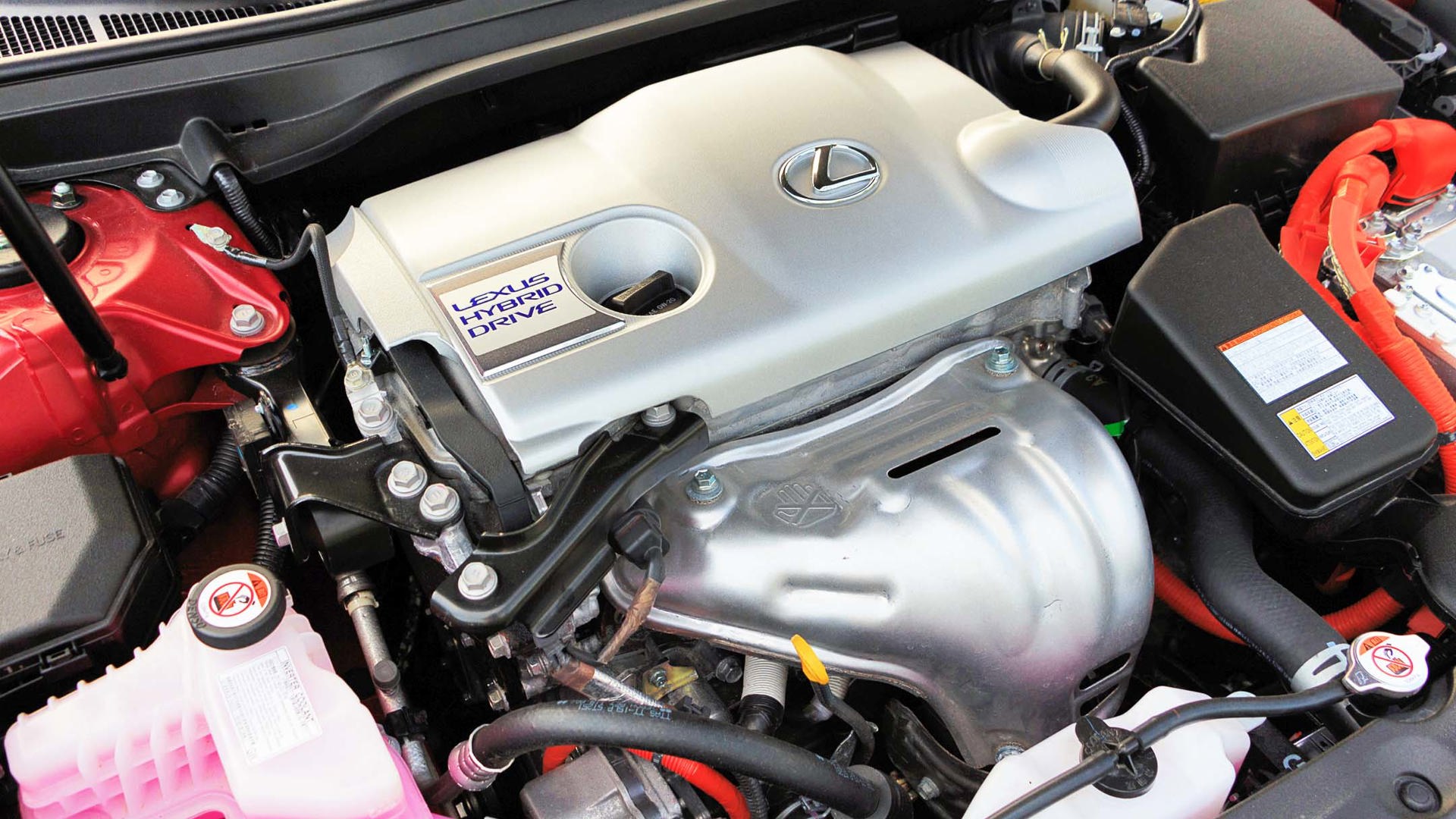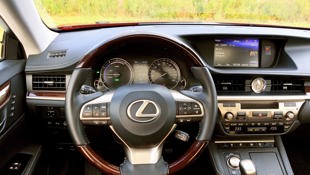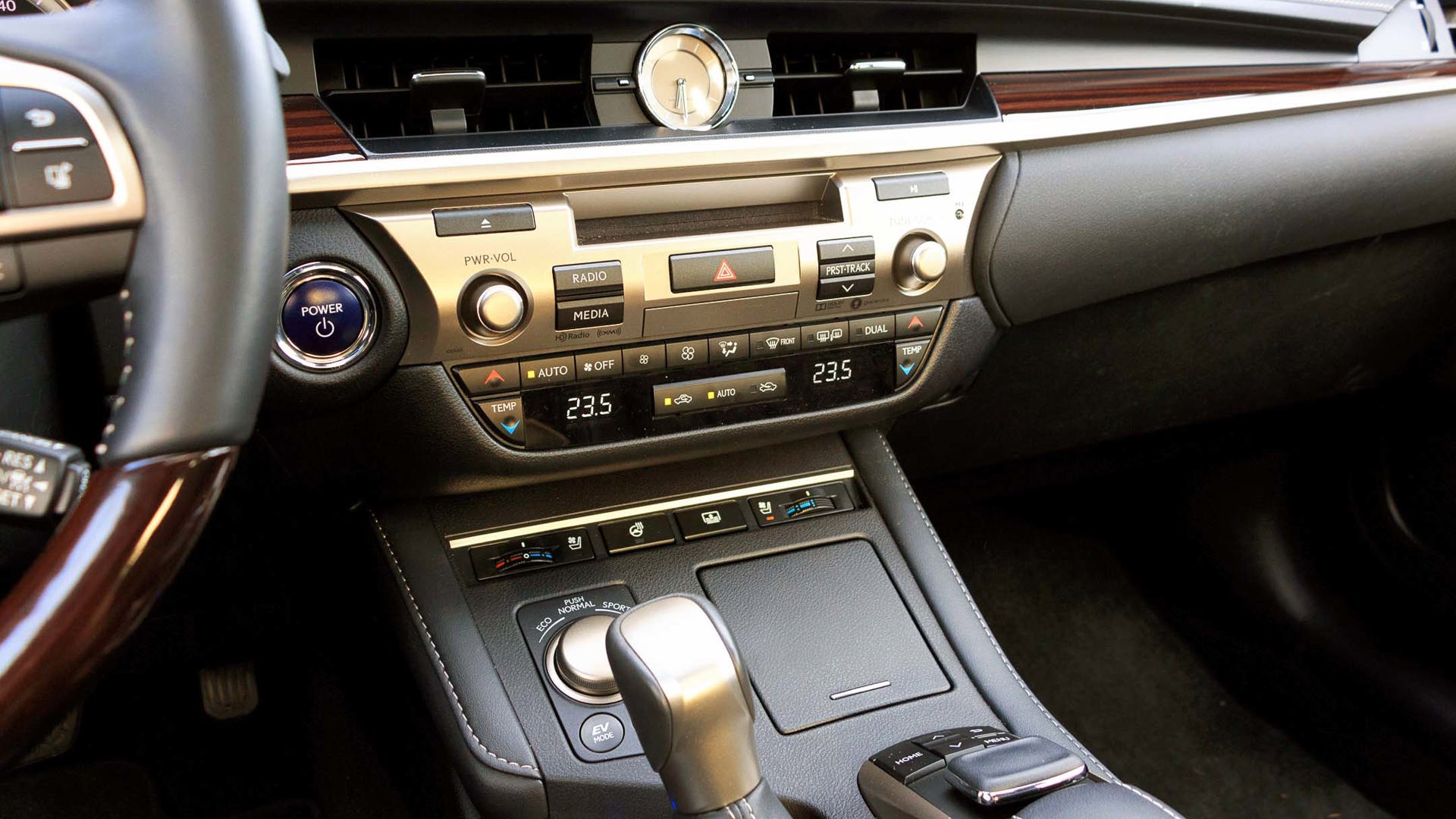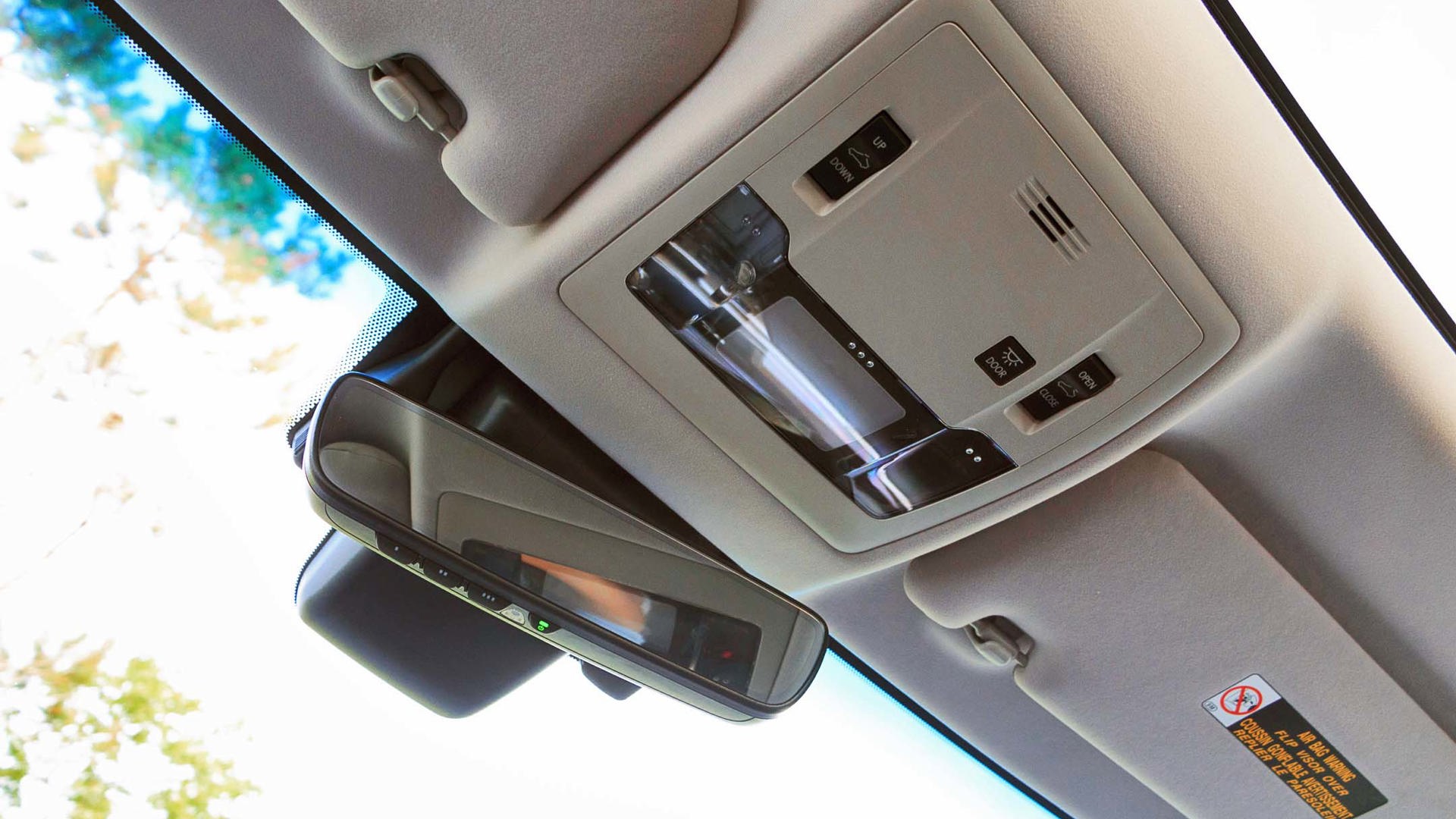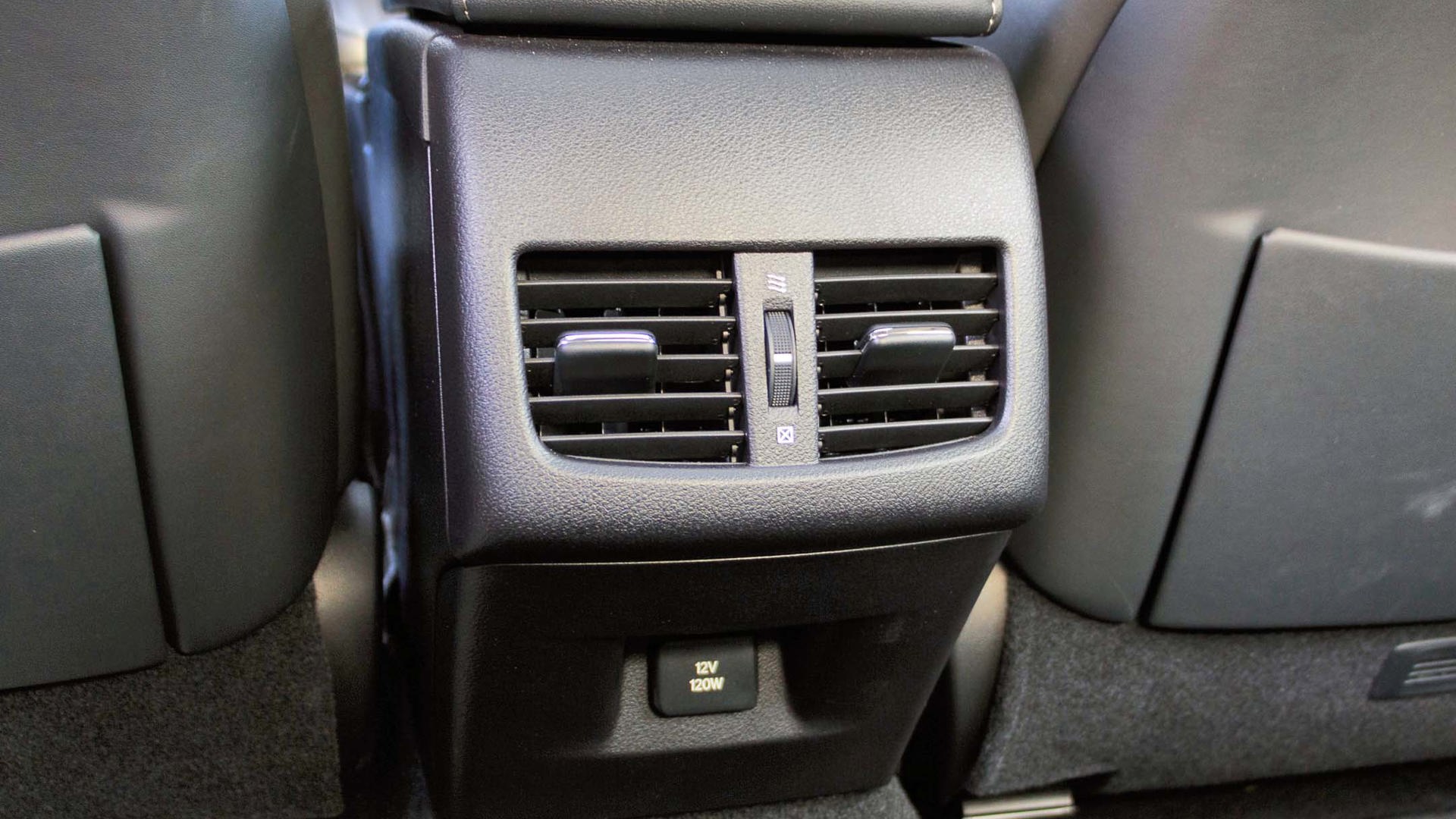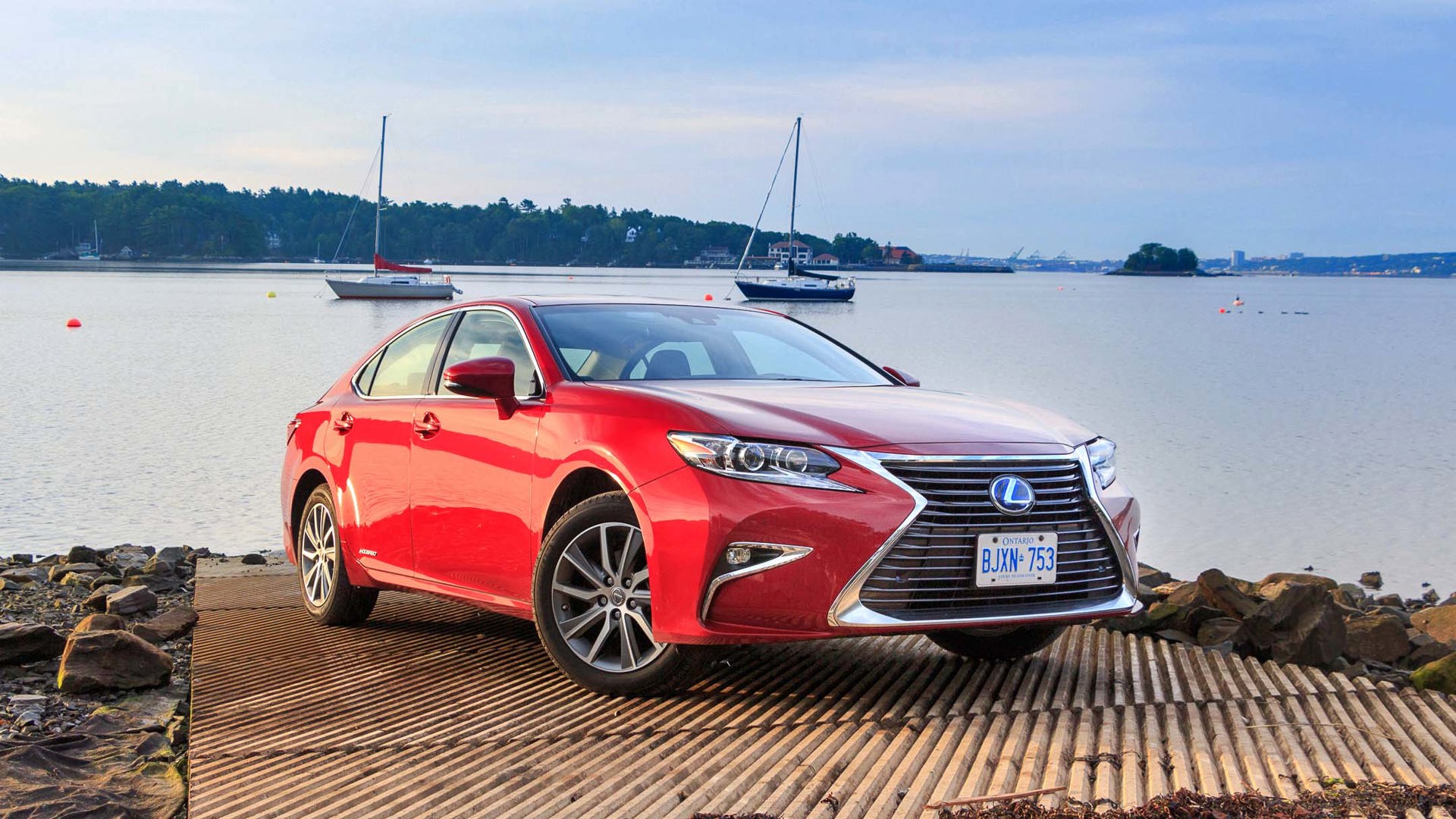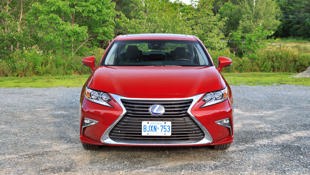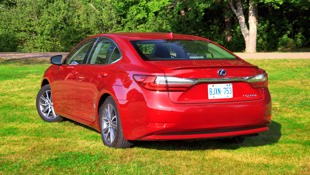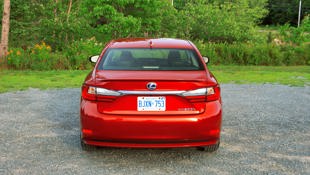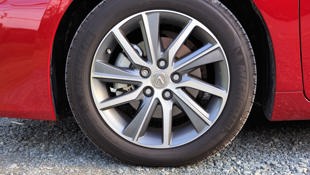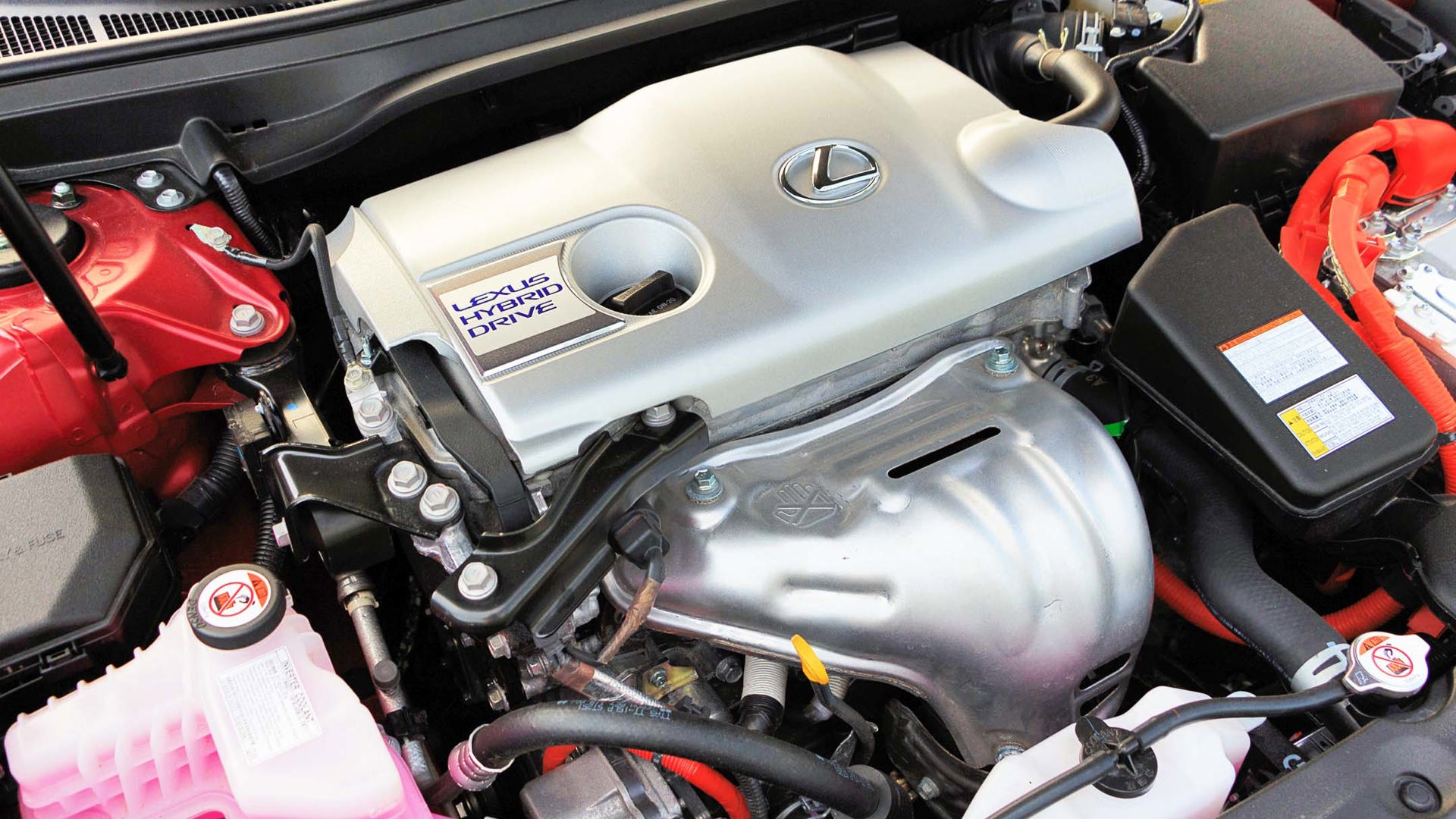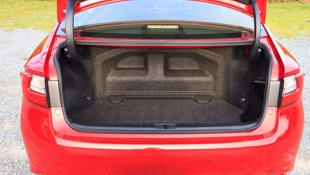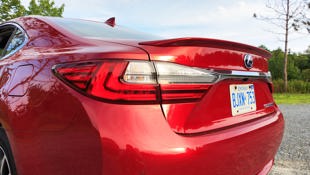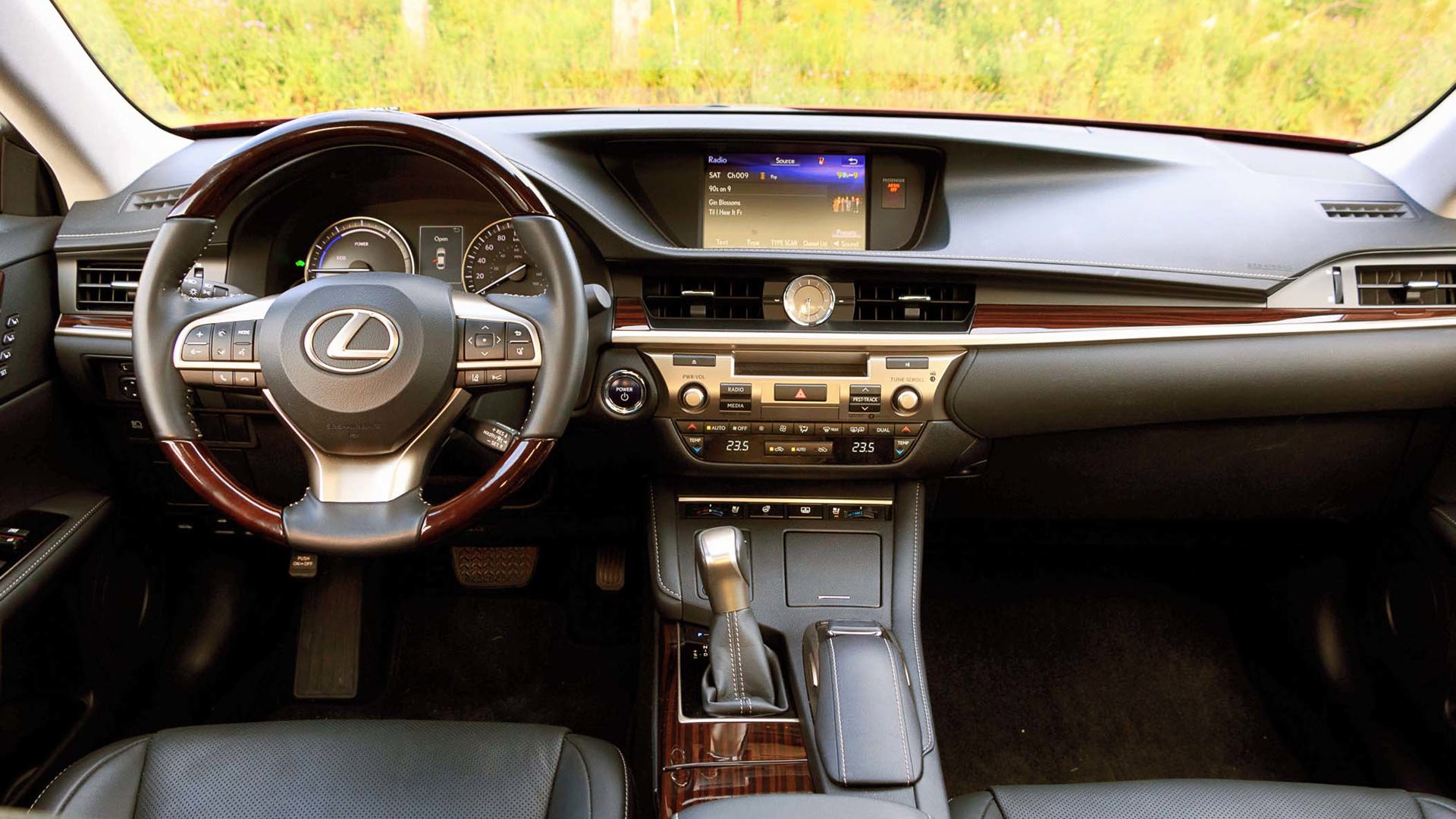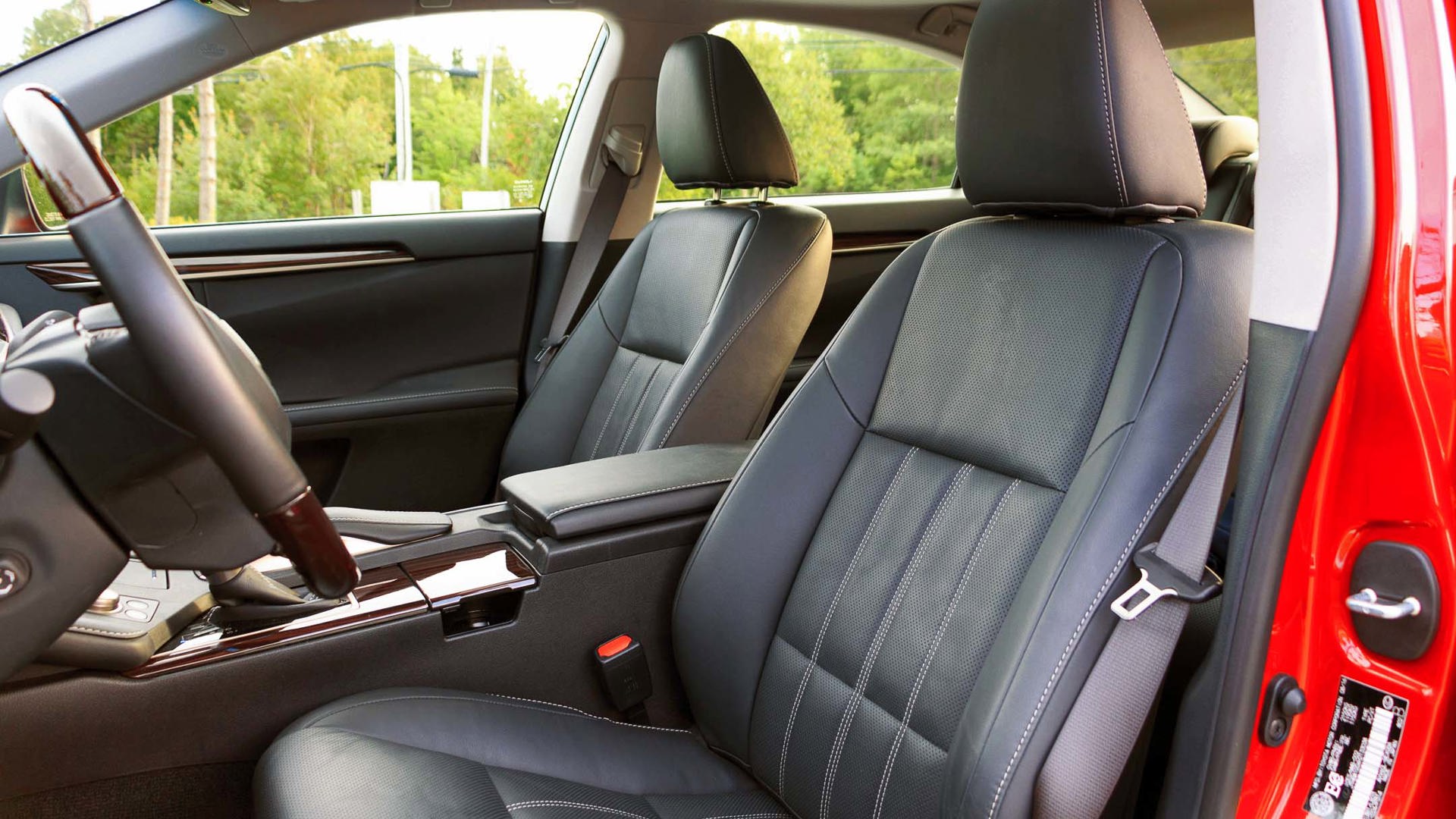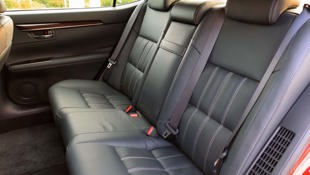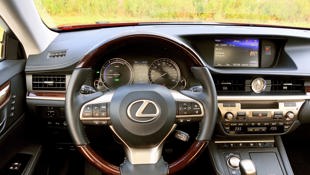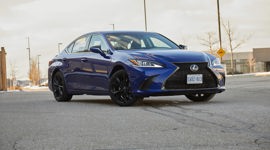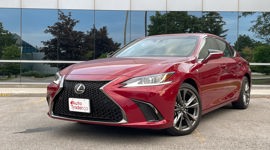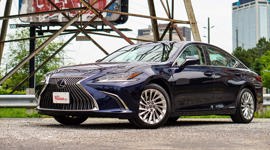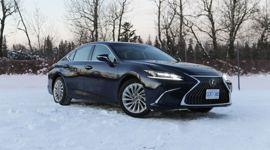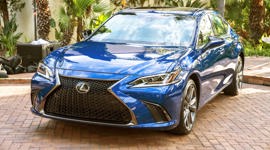 AutoTrader SCORE
AutoTrader SCORE
-
STYLING7/10
-
Safety9/10
-
PRACTICALITY7/10
-
USER-FRIENDLINESS7/10
-
FEATURES8/10
-
POWER8/10
-
COMFORT9/10
-
DRIVING FEEL7/10
-
FUEL ECONOMY9/10
-
VALUE7/10
There are two very different sides to Lexus' lineup of cars. On the one side sit the performance cars. The sports-sedans and coupes like the BMW-fighting IS and RC and the halo LC with a nearly 500 hp V8. On the other side sit the traditional Lexus models. The ones that built the brand with a reputation for quiet and comfortable cruising. The cars that aren't exciting, but are extremely good at getting you where you want to go with as little effort as possible.
I don't want to drive, I want to arrive.
The ES is firmly on the side of the comfortable cruiser.
On my third day with the ES, I have to drive 400 km before 11 am, and I can't think of many vehicles better suited to that drive than this one. It's a long, well-patrolled highway drive, not winding back-roads. I'm not looking for a high-speed Autobahn missile, I want something that will effortlessly soak up highway miles. I don't want to drive, I want to arrive. I want to drink my hot coffee and eat from the bag of bagels I bought at my favourite local bagel shop, and I want to suddenly find myself three provinces away from where I started.
And that's what the ES is about. If you want to drive, Lexus offers the similarly sized GS or the smaller IS. If you want to arrive, take the ES.
The ES 300h is the hybrid version of the front-drive mid-size Lexus ES sedan. It uses a 2.5L four that runs on the Atkinson cycle to trade power for fuel economy. It uses a pair of electric motors, one primarily as a generator, the other to provide power and to handle regeneration. The combination produces a total of 200 hp.
The power figure isn't impressive, especially next to the 268 hp of the gas V6-powered ES 350, but it's the massive electric motor torque that really shines. Continuously variable transmissions, like the one in the ES 300h, aren't appealing in a gas-only car, but they work well in a hybrid. The massive torque from the electric motor comes on instantly, propelling the car forward while the transmission changes ratios and brings in more power from the gas engine.
The combination of two electric motors, CVT transmission, gas engine, and the gearing to send energy between all the different components is extremely complicated. But in practice it's nearly seamless. Push the pedal, even at highway speeds, and the car accelerates quickly and quietly. Unless you've got your foot on the floorboard, it's surprisingly difficult to tell when the gas engine is on and when power is coming solely from the electric system.
In the ES, the ride is more important than the drive, but that doesn't mean the ES offers nothing to drivers. The steering is well weighted for its mission. It is light, but not too light. You won't find yourself over-correcting or sawing back-and-forth on the steering wheel to keep the car pointed straight like land yachts of the past. It offers almost no feel, but is still precise and direct.
But the ride is where it really shines. The ES 300h does Buick-ride the way GM wishes they could do it. The suspension soaks up everything but the biggest potholes with almost no drama. There's barely a sound from the suspension, and almost no feeling is transmitted into the cabin. Credit not just good shock tuning, but the choice to use 215/55R17 tires. Tires that are low-profile, but not so much that they transmit every little jolt into the car.
And while the ride is soft on bumps, it's never floaty in the way older cruisers were. Highway dips and depressions are absorbed without launching the car off of the other side. The rebound is controlled in one oscillation – none of the endless floating over a bump that many softly sprung cars suffer from.
Start throwing it down a windy and bumpy back-road, and things get a little more jolting. Make that a lot more jolting, as the suspension gets unhappy and confused. But if you're driving this car like that, you're missing the point. Throw it hard into a corner and it will give you loads of body roll, but drive it the way an ES driver will drive it, and it stays acceptably flat in corners.
The ES 300h comes standard with NuLux seating. That's Lexus code for fake leather. But don't think of it like near-vinyl, this material is soft and supple. My test car had the Touring package that added real leather, perforated for ventilation.
The base car is well equipped, coming with a leather-wrapped wheel, eight-speaker display audio system, 10-way power adjustable seat with heat and ventilation for both front seats, and an instrument system that lets the hybrid eco-meter turn into a tachometer when Sport mode is selected. The Touring package adds real leather seats, a power rear sunshade, navigation, power tilt steering, navigation, and heated steering wheel.
For safety, Touring adds LED high beams (the base car has LED low-beams and tail lights). Rear cross-traffic alerts and blind-spot monitoring are included in the package, adding to the lane-departure system, radar cruise control, and pre-collision system on the base car.
The top-trim Executive package adds rear door sunshades, a power trunk, premium leather, and – most importantly – a 15-speaker Mark Levinson audio system. In a car this quiet, that stereo truly shines and is the one must-have option for me.
The interior is well laid-out. The controls fall close at hand, and even the cupholders are well positioned. The ES moved up a size with the 2013 redesign, so it has plenty of space for even tall drivers, with lots of knee- and headroom even with the panoramic roof. Rear-seat passengers will enjoy ample legroom, although headroom may be tight for the very tall or long of torso. The seats make finding comfort, and staying comfortable, easy even on long drives. Trunk space is down about 90 L from the non-hybrid model, but the 342 L of space is still lots of room for luggage.
The ES still uses the Lexus mouse controller. Motors in the controller make sure that while you can scroll anywhere you want in map mode, it takes you only to options you can select in the menus. It stops on each menu position with a firm click, letting you know you can use one of the multiple buttons to make your selection. It takes a little bit of getting used to but is easy to use once you get the hang of it.
There are a few options that seem a menu or two deeper than they should be, but there are also some surprisingly thoughtful selections – like being able to choose the number of radio presets – that are quite useful. As far as controller-based infotainment systems go, it's one of the better ones.
Every time a performance car is revealed that offers more power and more speed for less money, enthusiasts rejoice. When a new ES arrives, those same enthusiasts pay it little attention. But think of this as a different type of performance car.
The Lexus ES is a car that delivers huge amounts of quiet, with comfort and poise comparable with cars that are twice the price. If quiet was ranked the same way as 0–100 km/h, and suppleness the same as cornering g's, the ES would be on magazine covers. The hybrid system that offers silent running and prodigious torque at a great value might be the ultimate expression of the ES.
Open the sunroof and there is almost no wind buffeting. Or even wind noise. It's like Lexus has installed an invisible panel in place of the sunroof glass. It has the same effect if you roll down a window. Even at highway speeds, there is almost no disruption of the air coming into the cabin.
Because while enthusiasts like to drive fast, and will accept the noise, harshness, and discomfort that comes with that speed, lots of drivers don't want any part of that. For those drivers, who want to arrive at their destination rested and relaxed with as little memory of the drive as possible, the ES 300h is exactly what they're looking for. It's like staying at a top-shelf hotel, where everything you want is taken care of but you never see when, how, or by whom.
You get in the ES, listen to some music, and you've arrived at your destination. It's what Lexus was born on, and it's what they do best. Think of the ES like the Mustang GT350 of comfort and you'll be on the right track.
| Engine Displacement | 2.5L |
|---|---|
| Engine Cylinders | 4 |
| Peak Horsepower | 200 hp |
| Peak Torque | 156 lb-ft |
| Fuel Economy | 5.8/6.1/5.9 L/100 km cty/hwy/cmb |
| Cargo Space | 342 L |
| Model Tested | 2017 Lexus ES 300h |
| Base Price | $46,200 |
| A/C Tax | $100 |
| Destination Fee | $2,045 |
| Price as Tested | $52,445 |
|
Optional Equipment
$4,100 – Touring Package $4,100
|
|
